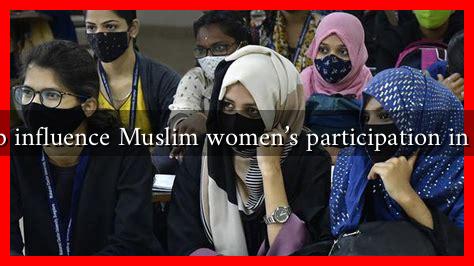-
Table of Contents
How Does the Hijab Influence Muslim Women’s Participation in Social Movements?
The hijab, a traditional headscarf worn by many Muslim women, is often a subject of debate and discussion in various social contexts. While it is primarily a symbol of faith and identity, the hijab also plays a significant role in shaping the participation of Muslim women in social movements. This article explores the multifaceted influence of the hijab on women’s activism, examining both the challenges and opportunities it presents.
The Hijab as a Symbol of Identity
For many Muslim women, the hijab is more than just a piece of clothing; it is a profound expression of their religious beliefs and cultural identity. This sense of identity can empower women to engage in social movements, as it fosters a sense of community and belonging. The hijab can serve as a unifying symbol among women who share similar values and experiences.
- Community Building: Wearing the hijab can create a sense of solidarity among Muslim women, encouraging them to come together for common causes.
- Empowerment: Many women find strength in their faith and use the hijab as a means to assert their identity in a diverse society.
- Visibility: The hijab can make Muslim women more visible in social movements, allowing them to represent their communities and advocate for their rights.
Challenges Faced by Hijab-Wearing Women in Activism
Despite the empowering aspects of the hijab, Muslim women often face significant challenges when participating in social movements. These challenges can stem from societal perceptions, discrimination, and even internal community dynamics.
- Discrimination: Hijab-wearing women may encounter prejudice or bias, which can deter them from participating in public demonstrations or activism.
- Misrepresentation: The media often portrays hijab-wearing women in a negative light, which can lead to stereotypes that undermine their credibility as activists.
- Internal Community Pressures: Some women may face pressure from their communities regarding how they should express their activism, leading to conflicts between personal beliefs and communal expectations.
Case Studies: Hijab and Social Movements
Several case studies illustrate how the hijab has influenced Muslim women’s participation in social movements across the globe. These examples highlight both the challenges and triumphs experienced by hijab-wearing activists.
The Arab Spring
During the Arab Spring, many Muslim women took to the streets wearing hijabs to demand political change and social justice. Their participation was crucial in shaping the narrative of the movements, as they challenged stereotypes and showcased their agency. For instance, in Tunisia, women played a pivotal role in protests, often using their hijabs as symbols of resistance against oppressive regimes.
Black Lives Matter Movement
In the United States, Muslim women have actively participated in the Black Lives Matter movement, often wearing hijabs as a statement of solidarity. Their involvement has highlighted the intersectionality of race, gender, and religion, emphasizing that the fight for justice transcends individual identities. Organizations like Muslim Anti-Racism Collaborative have worked to empower Muslim women in these spaces, fostering a sense of belonging and activism.
The Role of Social Media
Social media has emerged as a powerful tool for hijab-wearing women to engage in activism. Platforms like Twitter, Instagram, and Facebook allow them to share their stories, connect with like-minded individuals, and mobilize support for various causes.
- Amplifying Voices: Social media provides a platform for hijab-wearing women to share their experiences and advocate for change.
- Building Networks: Online communities can help women connect with others who share similar struggles and aspirations.
- Challenging Stereotypes: By showcasing their activism, these women can challenge prevailing stereotypes and promote a more nuanced understanding of their identities.
Conclusion
The hijab significantly influences Muslim women’s participation in social movements, serving as both a source of empowerment and a barrier to engagement. While it can foster community and solidarity, it also exposes women to discrimination and misrepresentation. However, through case studies and the power of social media, it is evident that hijab-wearing women are making their voices heard and challenging societal norms. As they continue to navigate the complexities of activism, their contributions are vital in shaping a more inclusive and equitable society.


